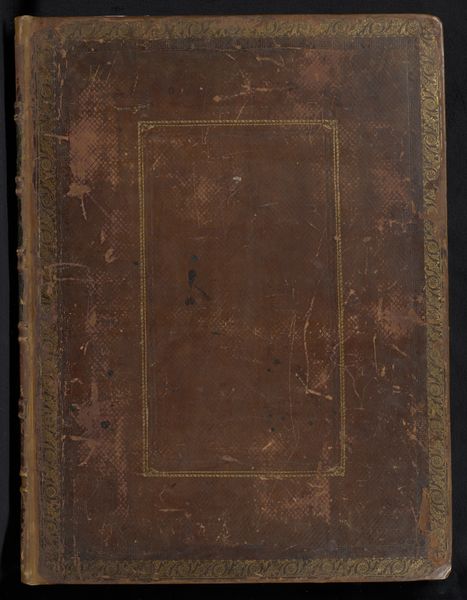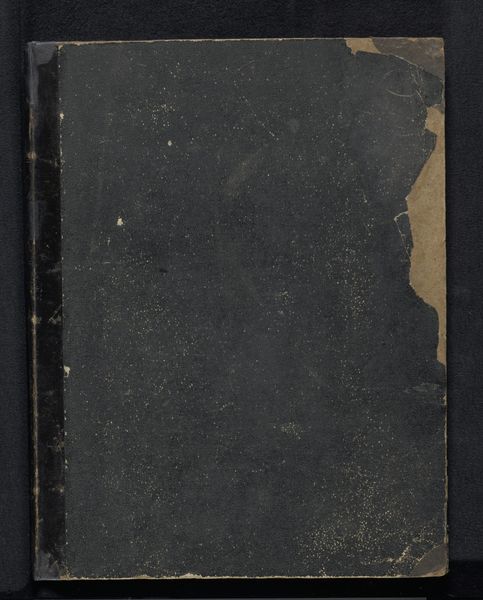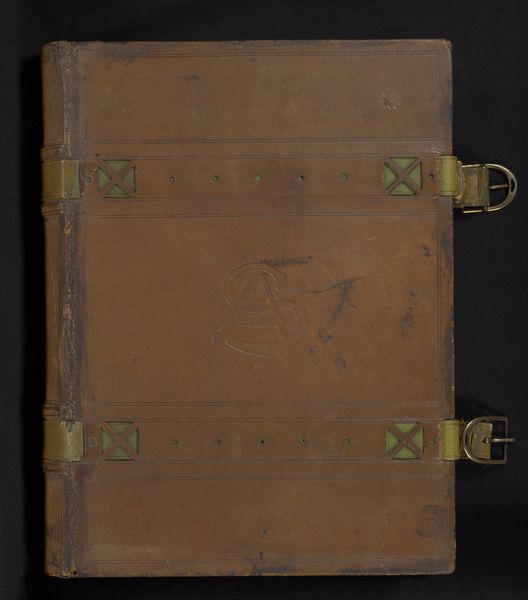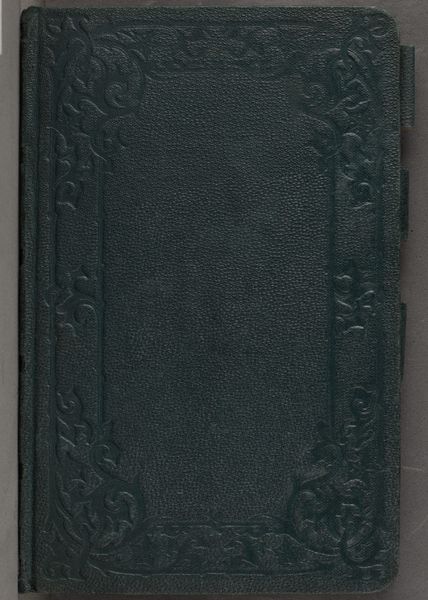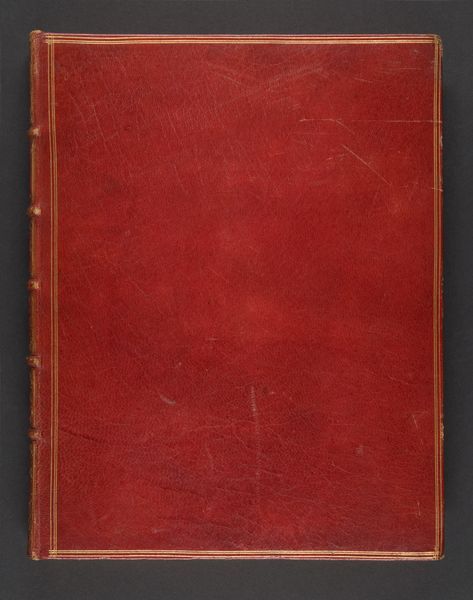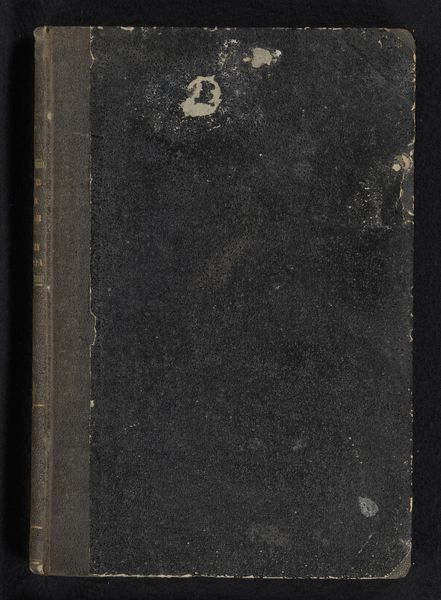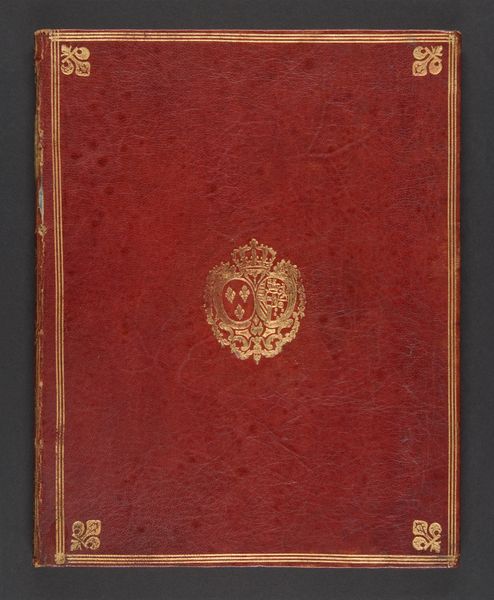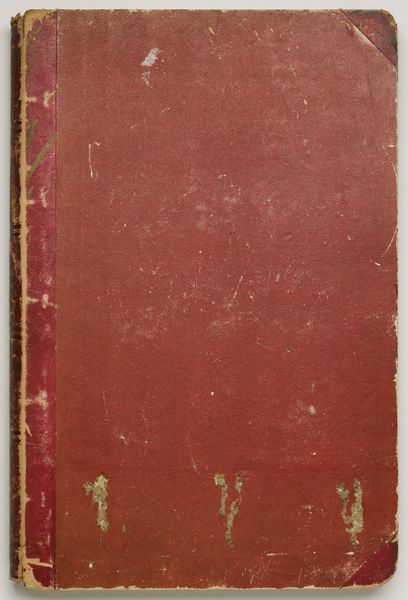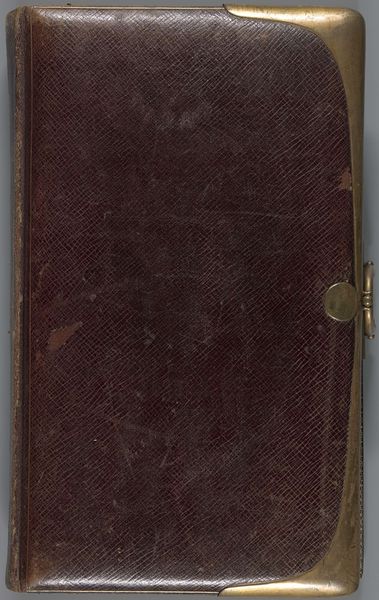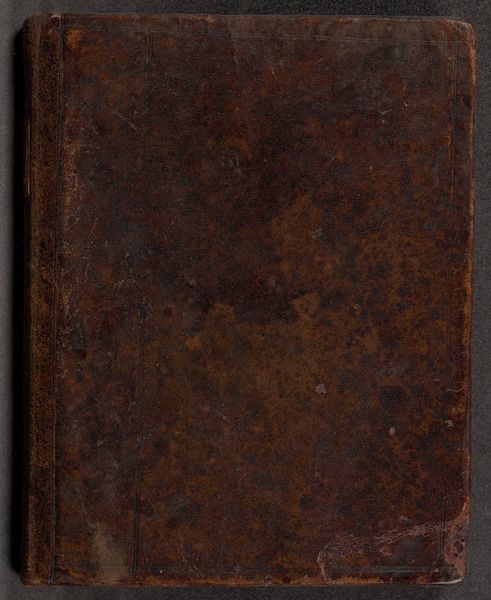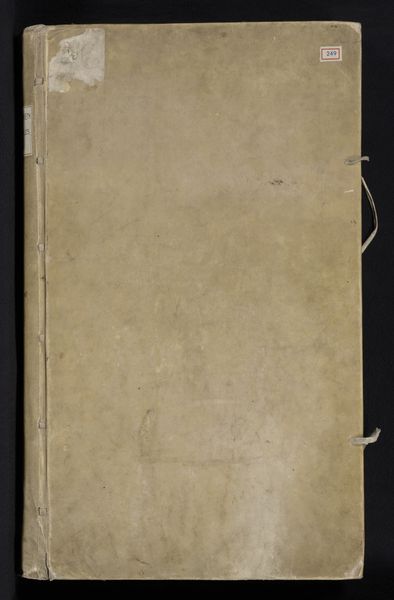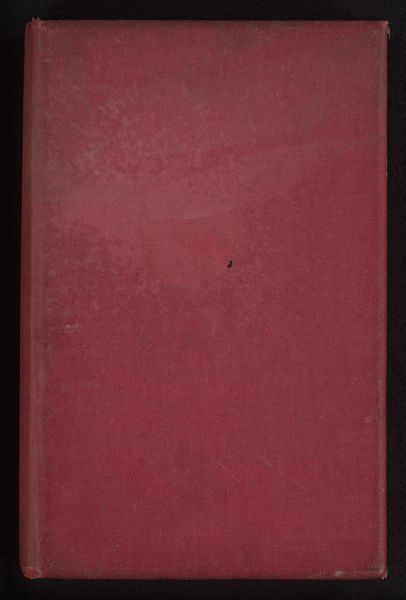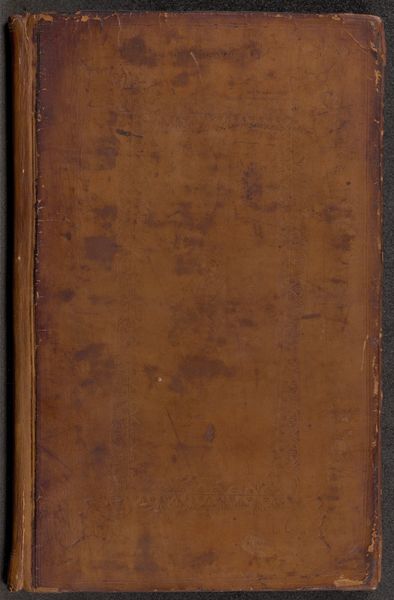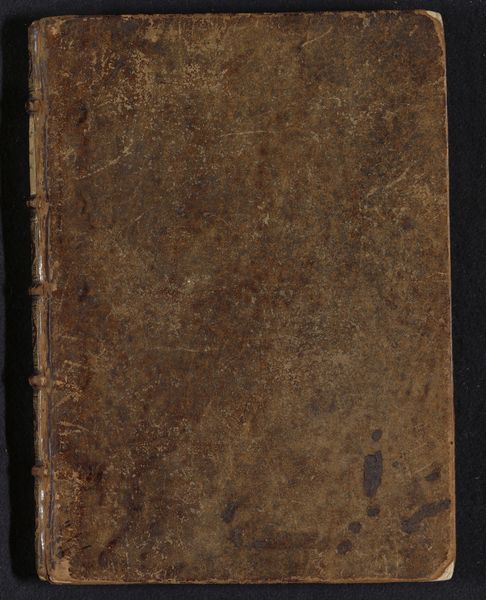
Fotoalbum met 113 fotografische reproducties op carte-de-visite-formaat van 17de-eeuwse Nederlandse schilderijen c. 1860 - 1880
0:00
0:00
collage, print, photography
#
collage
# print
#
photography
#
mixed media
Dimensions: height 310 mm, width 235 mm, thickness 58 mm
Copyright: Rijks Museum: Open Domain
Editor: We're looking at a photo album from approximately 1860 to 1880, titled "Fotoalbum met 113 fotografische reproducties op carte-de-visite-formaat van 17de-eeuwse Nederlandse schilderijen." It’s comprised of collage, prints, and photography, and resides here at the Rijksmuseum. Its aged appearance gives it a tangible connection to the past, and that deep red colour feels formal. What immediately jumps out to you about this object? Curator: My attention is immediately drawn to the composition, specifically the interplay of rectangular forms. The album cover presents a series of nested rectangles, framing the central marred space. How does the repetition of this shape inform your perception of the album's overall structure? Editor: It does create a sense of order, despite the album’s age. It's like a frame within a frame, which leads the eye inwards. Is there any significance to the colour red itself? Curator: Indeed. Consider the texture of the red material and its relation to the geometric framework. The colour functions as a flat plane disrupted by the aging process, thereby offering visual complexity. The contrast between the ordered design and its weathered state creates visual tension. Does this tension evoke any particular interpretation for you? Editor: It gives the object a sense of history and resilience, like it's witnessed generations. The album's design implies intention and care, now faded by the test of time. Curator: Precisely. Its materiality carries immense meaning. What I find fascinating here is how the physical decay serves as a visual index of its existence and transformation over time. Editor: I hadn't thought about the decay being part of its inherent aesthetic. Looking at it that way, it almost feels like the damage enhances, rather than detracts, from its beauty. Curator: Precisely. We gain appreciation not just of content, but also of the structural and surface-level treatment of its age.
Comments
No comments
Be the first to comment and join the conversation on the ultimate creative platform.
